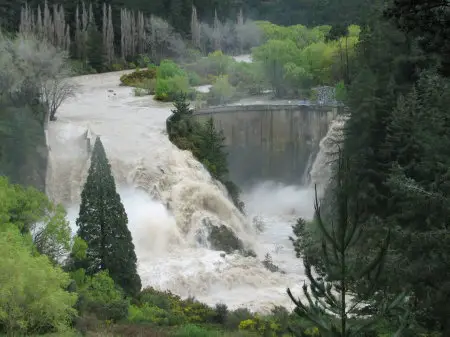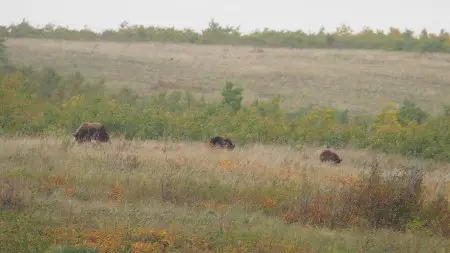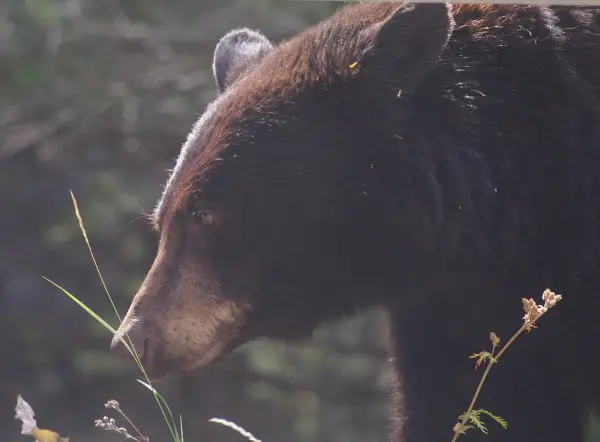Trout fishing is generally quite safe, but like all outdoor activities, it contains its share of dangers. Most dangers when trout fishing is associated with hyperthermia, drowning, and twisting ankles or knees.
I have had my fair shares of injuries while out trout fishing. My most common injuries are rolled ankles, insect stings, and removing the occassional wayward fly from my body.
In general, the most dangerous aspects of trout fishing are drowning and the weather.
I have never drowned but was once rolled downstream by a torrent when I tried to swim across the head of a pool. The rapid was much deeper and more powerful than I was expecting. Luckily it was only a small river and I was quickly able to gain my footing.
1) The Weather, Hyperthermia and trout fishing
The weather can change quickly in the mountains. A warm spring morning can turn into a freezing blizzard in the afternoon, and unless you are properly dressed and prepared it can easily turn into hyperthermia.
I have never had hyperthermia, but I have been extremely cold on several occasions when I packed too lightly for a day in the mountains.
It is not only cold that can be dangerous but also rain and storms in the headwaters. A shallow stream can be transformed into a raging torrent making crossing difficult.
I have read way too many examples of trout fishermen not noticing as a river rises around them. They might be fishing under blue skies, but many miles away a thunderstorm could be dropping gallons of water into the headwaters.
When they decide to head home, they are forced into dangerous crossing as the river rages around them.
Whenever I fish streams and rivers, I always keep one eye on the level. If I notice it is rising, I need to find out why and take the appropriate precautions.
When fishing in gorges or canyons, I always make sure I have an escape route. Can I climb the cliffs, or do I have to push on upwards or downstream for safety?

2) Drowning is a real danger when trout fishing.
The biggest cause of death among fishermen is drowning, and that does not need to be the case. Most drowning deaths are easily avoidable if the proper precautions are taken.
While approximately half of all drownings involve small watercraft. They are surprisingly easy to overturn or to swamp. Significant numbers also drown while fishing from the shore or wading. The tragic reality is, all such deaths should be preventable taking appropriate precautions.
If you are not a strong swimmer it is a good idea to swallow your pride and wear a floatation device or life jacket. While tumbling down a trout river is not the time to learn how to swim. Modern floatation devices are not bulky, cumbersome jackets. Some of them look no different from a fly fishing vest so there is really no excuse not to wear them when fishing in dangerous situations. Here is one example from amazon.
In the pool I can swim a mile, but in a torrent, weighed down by boots, waders and a thick jacket my ability is greatly reduced. Holding onto a fly rod is harder still. If you are not a strong swimmer, you are largely at the mercy of the current whether you live or die.
Even as a strong swimmer, when deep wading at river mouths I often throw on my personal floatation device. It is the same one I use when kayak fishing, so it is full of pockets and functions just like a vest. Another advantage of wearing my PFD is if someone else loses their footing, I know I can safely leap in for a rescue without putting my own life in danger.
There is also a degree of danger associated with waders. I do not want to get into the debate on whether waders float, or pull anglers to their death. I believe giving certain circumstances both are true.
I have swam, underwater in waders, but there is no need to take any risks and always wear a wading belt to help trap the air in and keep the water out.

3) What are the most common Injuries for a trout angler?
I have had quite a few injuries while out fishing. The vast majority are scrapes, bumps and bruises when I lose my footing or take a short tumble. Rolled ankles are also quite common, luckily I have never twisted one. Some of my fishing buddies have and it does not seem like fun.
I did twist my knee once while climbing out of a sit inside kayak, it was immensely painful once the adrenaline wore off. Luckily it happened right at the parking lot and the freezing winter water helped dull the pain as I loaded the kayak back onto my truck.
A twisted ankle or knee can be very bad news when fishing remotely. Walking for several hours must be painful. If fishing alone, and out of cell phone reception it is probably a good idea to bring a locator beacon.
There is not really any surefire way to prevent ankle injuries. Sure you can wear a stiff boot, but that just transfers the pressure from your ankle to your knee. A rolled knee is arguably more painful than a rolled ankle.
The second most common injuries seem to involve fishing hooks. I have had my fair share of flies in my skin, usually all from my own bad habits. When fly fishing, it is essential to wear sunglasses to protect your eyes. I have had a few flies bounce of my glasses.
I usually remove the hooks by myself. I slowly work them out the way they come in, I find it is much too painful to push the point out and cut off the barb. One hint, barbless hooks are so much easier to remove from your neck than barbed ones.
4) Be aware of wild animals when fishing in the back country
Depending on where and when you fish, attacks from wild animals might be a danger. I personally have not seen anything more dangerous than a coyote or larger than an Elk.
Bears immediately spring to mind, and I know in some areas such as Alaska they are a frequent sight on the trout rivers. I personally have never seen one up close while fishing. Have only seen them in the distance, and on the drive there but never on the water.
Dealing with bears while on the river, is similar to dealing with bears on a hike. Make plenty of noise (the trout are not going to hear you) and make sure the bears hear you will before they see you. Most importantly do not sneak up on them and block their route of escape. Most bears want absolutely nothing to do with us and will keep their distance.
Mountain lions are also a concern in some areas, and if desperate are probably more likely to be aggressive. I have never seen one, but once did see footprints that seemed like it could belong to one.
If fishing in an area with a particularly large population of Bears or Mountain lions, it is probably advisable to take some protection such as bear spray. I know some people who also carry a shotgun with them when fishing in bear country.
When night fishing, the shadows do play quite a few tricks on the mind and every sound in the dark does sound like a bear approaching. A bright flash of the head torch usually reveals it is nothing of concern. Coyotes can get a bit cheeky under the cover of darkness.
I will end with a note, that is not only the predatory animals that are a danger. A maternal elk or cranky moose can become aggressive at times. Suppose a large boar if cornered could also be threatening. But like all animals, they really do not want anything to do with us.
Lastly, farm animals might prove to be a much bigger risk than wild animals. Simply because they do not fear us. I have seen an angry bull, and overly friendly cows chase anglers up trees. Some cows are also very protective of their young. So it pays not to get between a mother and her newborn. Feral cattle can be particularly dangerous, luckily they do not seem to be common.

5) Other Dangers when trout fishing
Well, other humans can be a danger. There are some rivers I do not fish during the hunting season or roar.
There is also a risk of a lightning strike, probably more so when out on a lake and a storm rolls in. No matter where you are fishing a graphite rod makes for a great conductor. For more information on thunderstorms and trout fishing, I have an article here.
There is a small risk of ‘quick sand’ and getting stuck in soft mud. I was once fishing a river full of mudstone. I had just climbed onto a large boulder and decided to jump onto a flat patch of sand. Well, I instantly sunk down to my waist before bottoming out. My mate had to help pull me out and I nearly lose a shoe.
Sheet ice in the spring can also be a bit dangerous to walk on. I have seen some cases where it is sloped towards a deep pool. Slipping and ending up in the drink is unlikely to have a good outcome.

